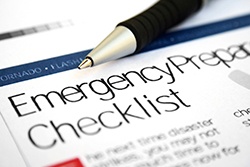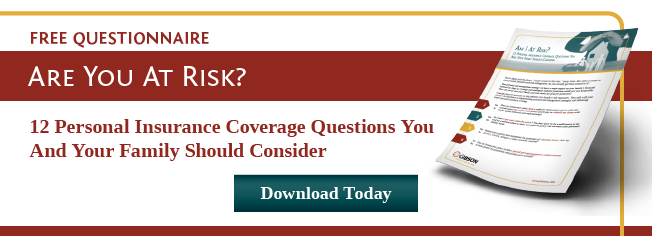 Being #DisasterReady is not limited to businesses. Individuals and families also need to plan ahead in order to be prepared when disaster strikes. How will you get everyone out of the house safely? How will you access important family records? How will you get back up on your feet and able to return to work?
Being #DisasterReady is not limited to businesses. Individuals and families also need to plan ahead in order to be prepared when disaster strikes. How will you get everyone out of the house safely? How will you access important family records? How will you get back up on your feet and able to return to work?
Your personal disaster preparedness planning should address these concerns and more. Though not exclusive, below are 8 items to consider when preparing your emergency plan:
1. Family Communications Plan
Does your family know how they will get in touch with each other in an emergency situation? FEMA offers a template for parents and kids to help you make a family communications plan.
2. Evacuation Plan
How will your family evacuate your home? Where will you go? Identify multiple escape routes and make sure your kids understand them. You could create a drawing of your home and mark the escape routes, then post the drawing in your child’s room. Purchase escape ladders for second story windows. And establish a place for your family to meet after evacuating. The Insurance Information Institute (III) has several resources to help you plan, including: Preparing An Effective Evacuation Plan, Evacuation: How To Get Organized, and Evacuation: 10 Minute Challenge.
3. Address The Needs Of All Family Members
Keep in mind each family member’s needs. Individuals with access and functional needs, seniors, infants & young children – have you considered their unique needs?
4. Include Pets In Your Plans
Too often pets are lost or abandoned during disasters, but you can avoid this by including your family’s pets as part of your emergency planning. There are tips and planning tools available to help you do so, including some from Ready.gov and III.
5. Using Technology
We rely on technology in so many ways and it has become a crucial part of how individuals gather information and communicate with loved ones during emergencies. Ready.gov has useful tips on how to take advantage of technology before, during, and after an emergency.
6. Shutting Off Utilities
Make sure you and your family members know how to safely shut of utilities in your home – natural gas, water, and electricity. For information on each of these, visit Ready.gov.
7. Financial Preparedness
Having your evacuation plan in place is an essential part of preparedness, but being financially ready is a step often overlooked. Do you have adequate insurance? Do you have a plan for how to access your account information and important records during or after a disaster? FEMA has an Emergency Financial First Aid Kit to get you on the right path, and you can find additional resources from Ready.gov.
8. Test Your Plan!
Having a plan is important, but it is crucial to practice your plan to ensure it really works. Gather your family to review your emergency plan – how you’ll evacuate, how you’ll communicate, and where you will meet after a disaster. Then practice it!
As easy it may be to brush these tips aside, saying you’ll get to them when you have time, procrastinating on your family’s emergency planning can be disastrous. Make the time and get your family on track to being #DisasterReady.




